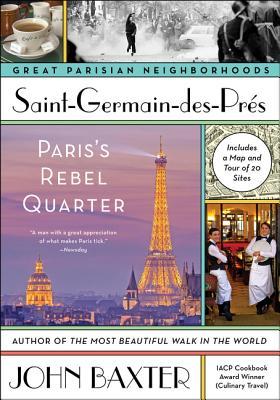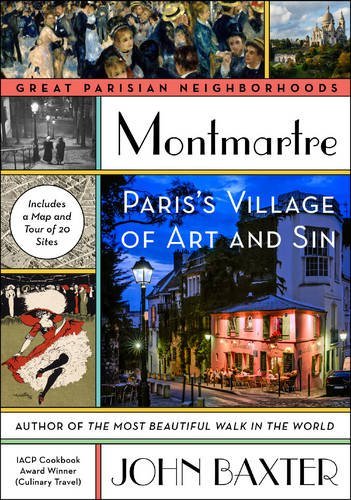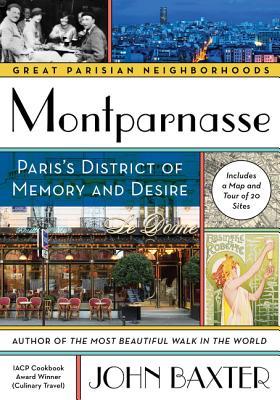


Books in series

Saint-Germain-des-Pres
Paris's Rebel Quarter
2016

Montmartre
Paris's Village of Art and Sin
2017

Montparnasse
Paris's District of Memory and Desire
2017
Author
John Baxter (born 1939 in Randwick, New South Wales) is an Australian-born writer, journalist, and film-maker. Baxter has lived in Britain and the United States as well as in his native Sydney, but has made his home in Paris since 1989, where he is married to the film-maker Marie-Dominique Montel. They have one daughter, Louise. He began writing science fiction in the early 1960s for New Worlds, Science Fantasy and other British magazines. His first novel, though serialised in New Worlds as THE GOD KILLERS, was published as a book in the US by Ace as The Off-Worlders. He was Visiting Professor at Hollins College in Virginia in 1975-1976. He has written a number of short stories and novels in that genre and a book about SF in the movies, as well as editing collections of Australian science fiction. Baxter has also written a large number of other works dealing with the movies, including biographies of film personalities, including Federico Fellini, Luis Buñuel, Steven Spielberg, Stanley Kubrick, Woody Allen, George Lucas and Robert De Niro. He has written a number of documentaries, including a survey of the life and work of the painter Fernando Botero. He also co-produced, wrote and presented three television series for the Australian Broadcasting Commission, Filmstruck, First Take and The Cutting Room, and was co-editor of the ABC book programme Books And Writing. In the 1960s, he was a member of the WEA Film Study Group with such notable people as Ian Klava, Frank Moorhouse, Michael Thornhill, John Flaus and Ken Quinnell. From July 1965 to December 1967 the WEA Film Study Group published the cinema journal FILM DIGEST. This journal was edited by John Baxter. For a number of years in the sixties, he was active in the Sydney Film Festival, and during the 1980s served in a consulting capacity on a number of film-funding bodies, as well as writing film criticism for The Australian and other periodicals. Some of his books have been translated into various languages, including Japanese and Chinese. Since moving to Paris, he has written four books of autobiography, A Pound of Paper: Confessions of a Book Addict, We'll Always Have Paris: Sex and Love in the City of Light, Immoveable feast : a Paris Christmas, and The Most Beautiful Walk in the World : a Pedestrian in Paris. Since 2007 he has been co-director of the annual Paris Writers Workshop.